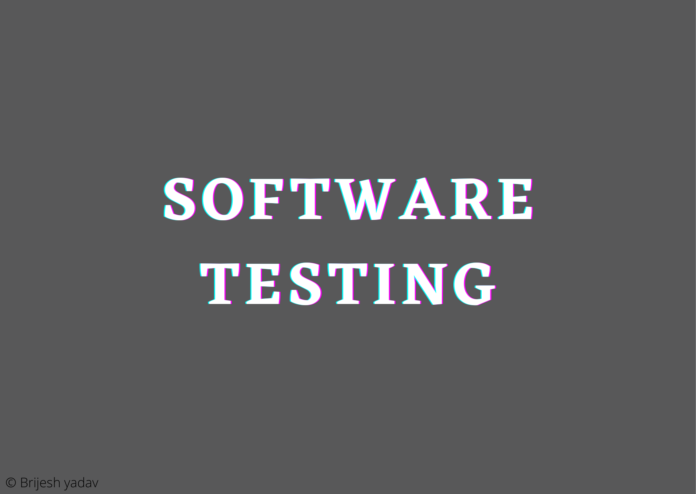Software Testing
Software testing is the process of executing a pro ram with the intention of finding errors. It is a process to verify that whether a system or its parts is satisfying specified requirements or not.
Following are the objectives es of software testing:
1. Software quality improvement
2. Verification and validation
3. Software reliability estimation
1. Software quality improvement:
Software quality means conformance to the specified software design requirements. The minimum requirement of quality means performing as required under specified circumstances. Software testing is not only uses to remove bugs but also to find out design defects by the programmer.
2. Verification and validation:
Verification means to test that we are building the product in right using a are the correct procedure for the development of software so that it can meet the user requirements. Whereas validation is the process which checks that whether we are building the right product or not.
3. Software reliability estimation
Software reliability has an important relationship with many aspects of software development. Its objective is to discover the residual designing errors before delivery to the customer. The failure data during the testing process are take down in order to estimate the software reliability.
Principles of Software testing
- All tests should be traceable to customer requirements.
- Testing time and resources are in limit, so avoid the redundant test.
- It is impossible to test everything.
- Use effective resources to test.
- Test should be planned long before testing begins i.e., after the requirement phase.
Unit / Module testing
- The Unit testing is a level of software testing where individual units/ components of the software are testing.
- Unit testing focuses verification effort on the smallest unit of software design, the software component or module.
- In unit testing, individual components are testing to ensure that they are working properly in the same manner as required.
- In this process, a module (software component) is taken and executed in isolation from the rest of the software product. That’s why it is also called “software component testing”.
- It is the lowest level of testing of an application.
- The relative complexity of tests and uncovered errors is limiting by the constrained scope established for unit testing.
- The unit testing is white box oriented. And the steps can be conduct in parallel or multiple components.
- Unit testing is typically conducting by the development team and programmer who coded the unit.
Read more about the Information model





